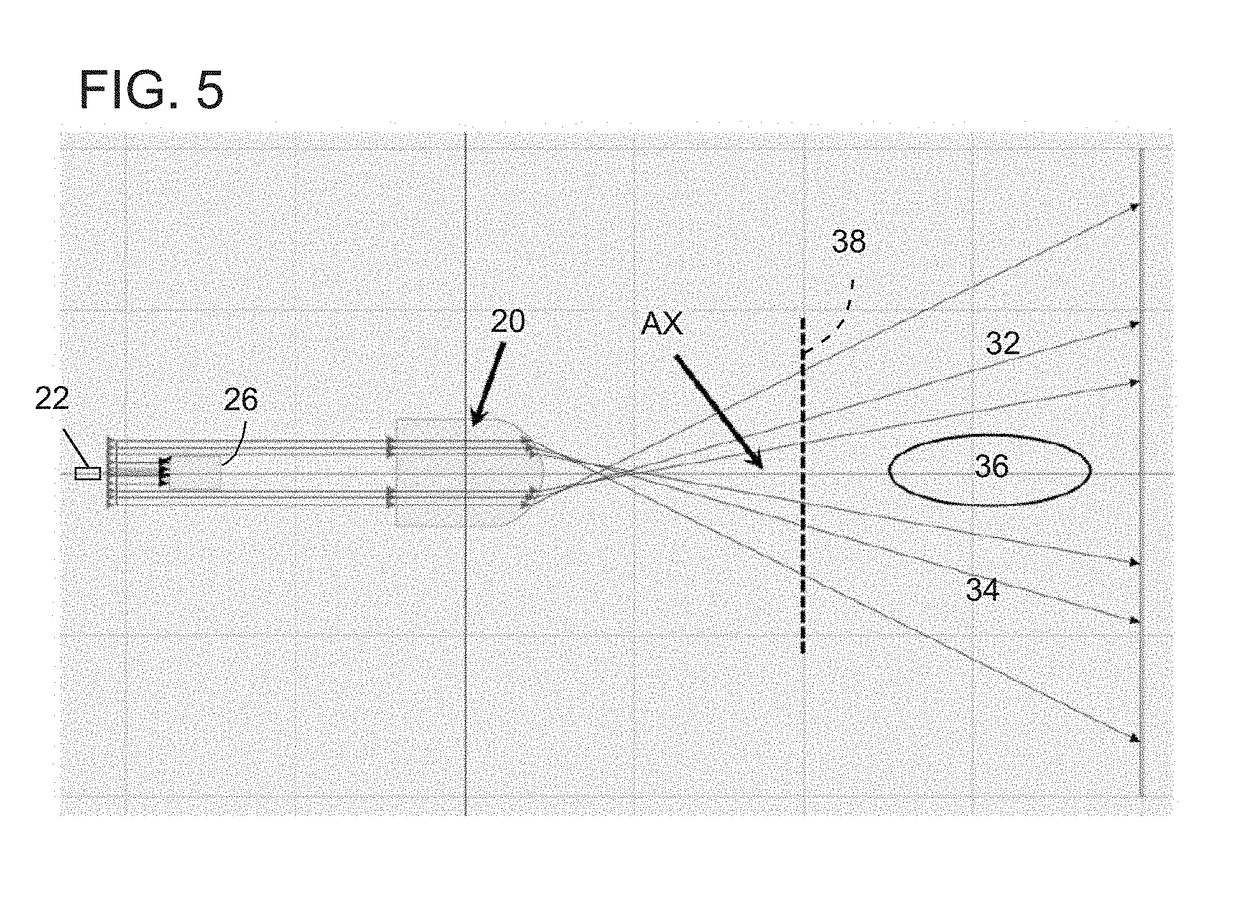Lighting device for producing a supplemental beam
a technology of supplemental beams and light sources, which is applied in the direction of fixed installations, lighting and heating apparatuses, instruments, etc., can solve the problems of limited benefit of high beams, complex mechanisms of systems, and high cost, and achieve the effect of increasing the intensity of primary beams
- Summary
- Abstract
- Description
- Claims
- Application Information
AI Technical Summary
Benefits of technology
Problems solved by technology
Method used
Image
Examples
Embodiment Construction
[0097]FIG. 1 is a prior art view that illustrates a simplified pattern 10 of light distribution of a headlight in an ordinary motor vehicle 12. FIG. 2 is a simplified prior art representation of the cross-sectional intensity distribution 14 of the pattern 10, taken along dashed line D in FIG. 1.
[0098]It may be desired to increase the light intensity projected into regions 16 in FIG. 1, which flank the main or primary beam pattern 10. If this is done by increasing the intensity of the headlamps, then the intensity at a point P in FIG. 2 may also increase, which may be undesirable. That is, the increase in intensity may shift the entire intensity curve in FIG. 2 upward to curve 14a shown in phantom. However, government regulations place limits on the maximum intensity allowed on headlamps. The level labeled 75K in FIG. 2 represents such a limit, and the shifted curve 14a would exceed this regulated limit. In FIG. 2, the line labeled 75K represents a limit of intensity, imposed by gove...
PUM
 Login to View More
Login to View More Abstract
Description
Claims
Application Information
 Login to View More
Login to View More - R&D
- Intellectual Property
- Life Sciences
- Materials
- Tech Scout
- Unparalleled Data Quality
- Higher Quality Content
- 60% Fewer Hallucinations
Browse by: Latest US Patents, China's latest patents, Technical Efficacy Thesaurus, Application Domain, Technology Topic, Popular Technical Reports.
© 2025 PatSnap. All rights reserved.Legal|Privacy policy|Modern Slavery Act Transparency Statement|Sitemap|About US| Contact US: help@patsnap.com



